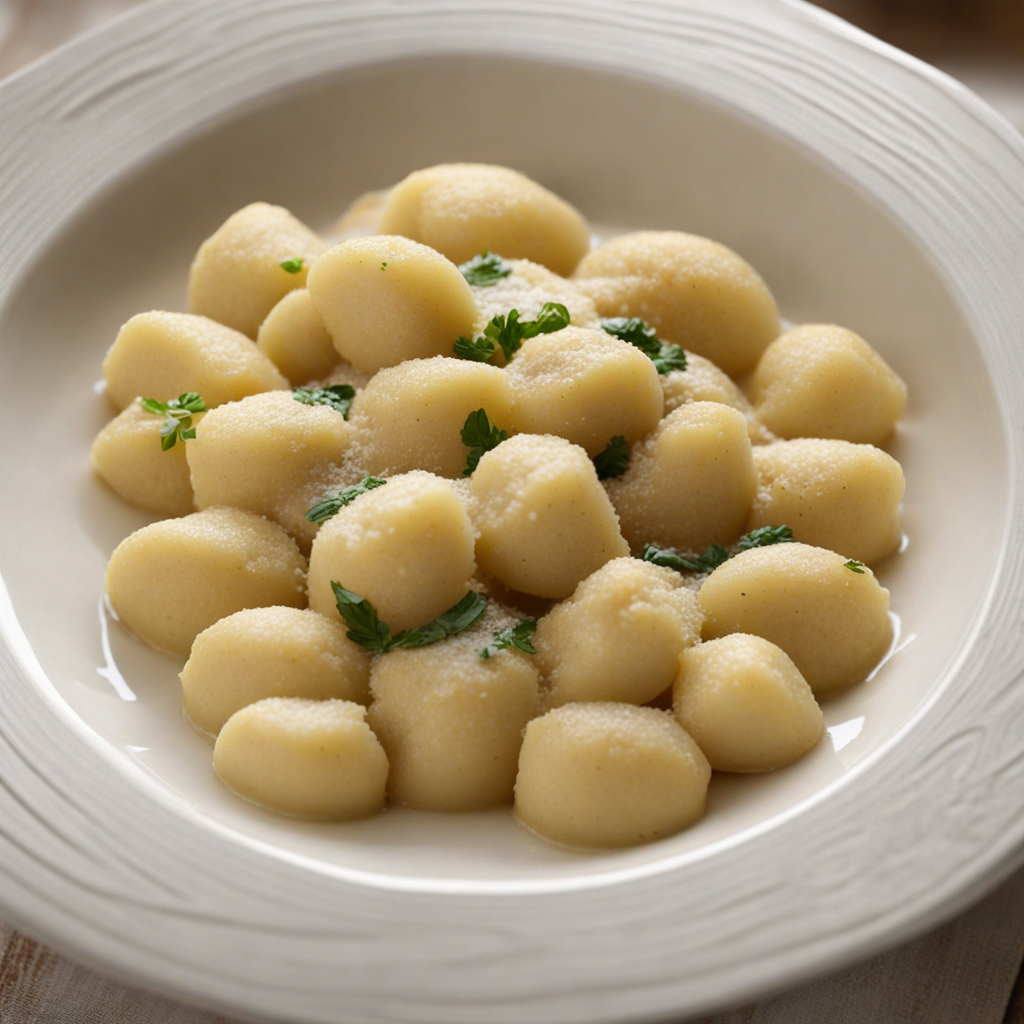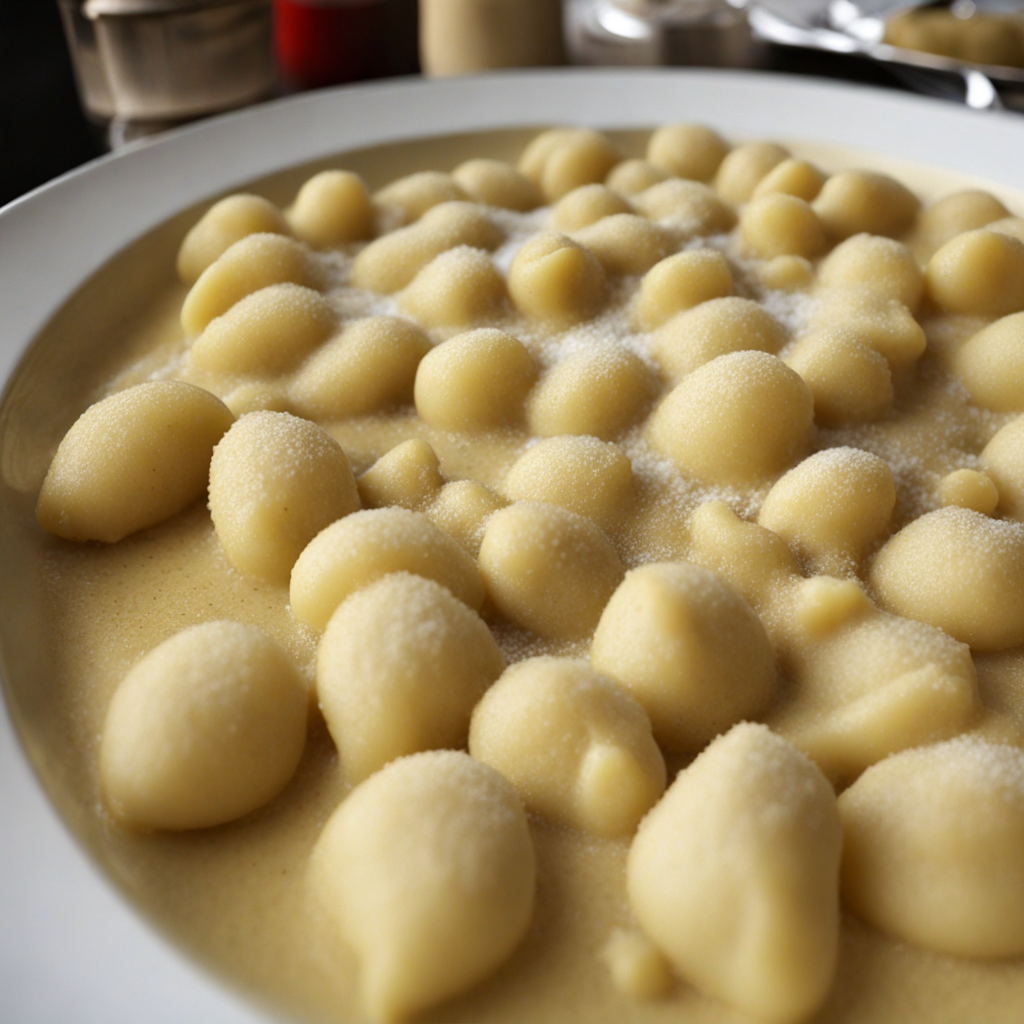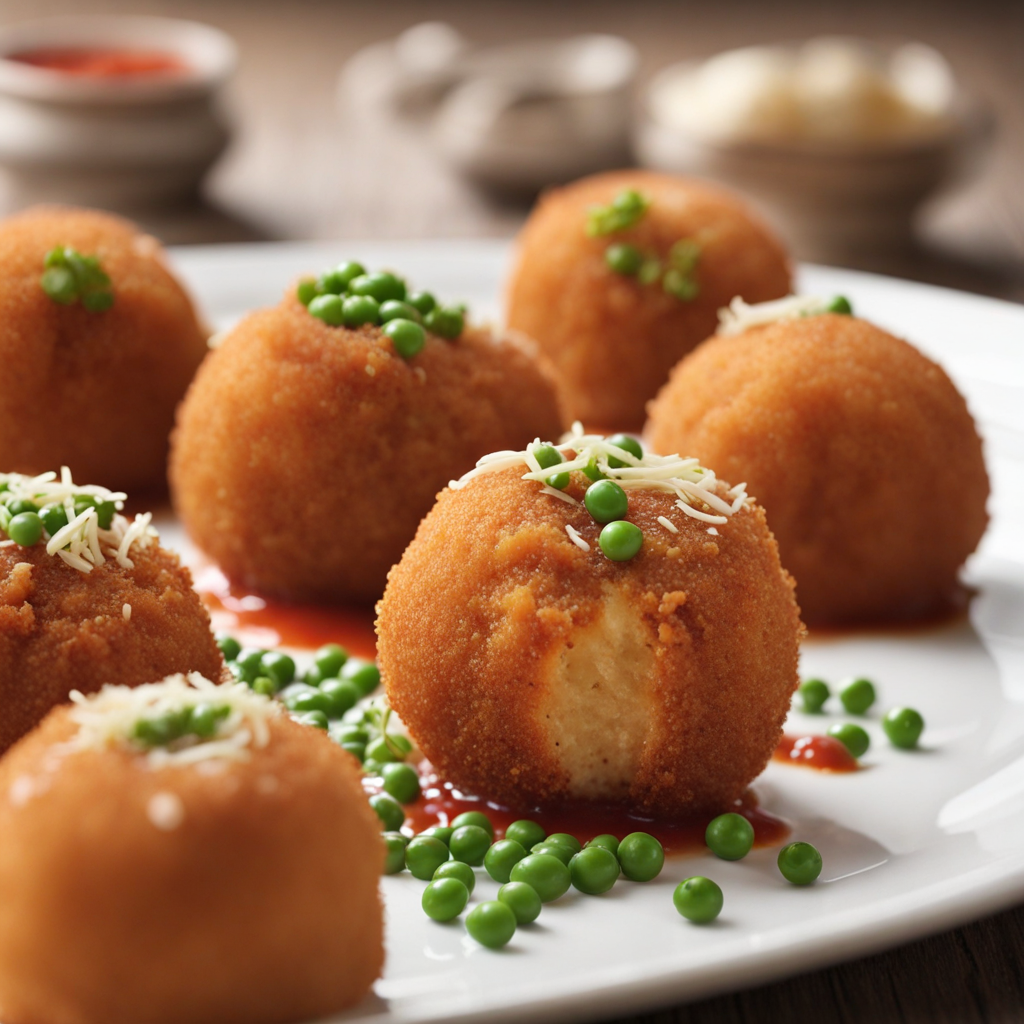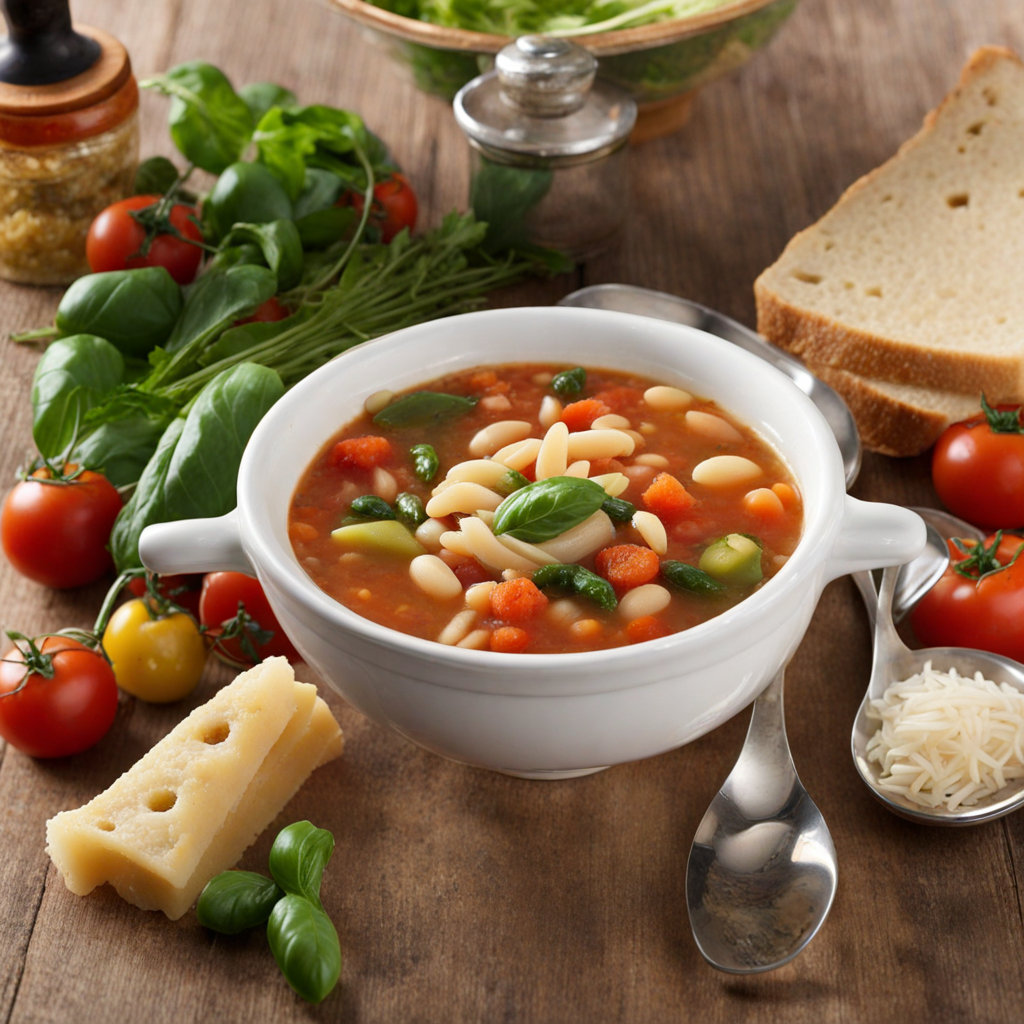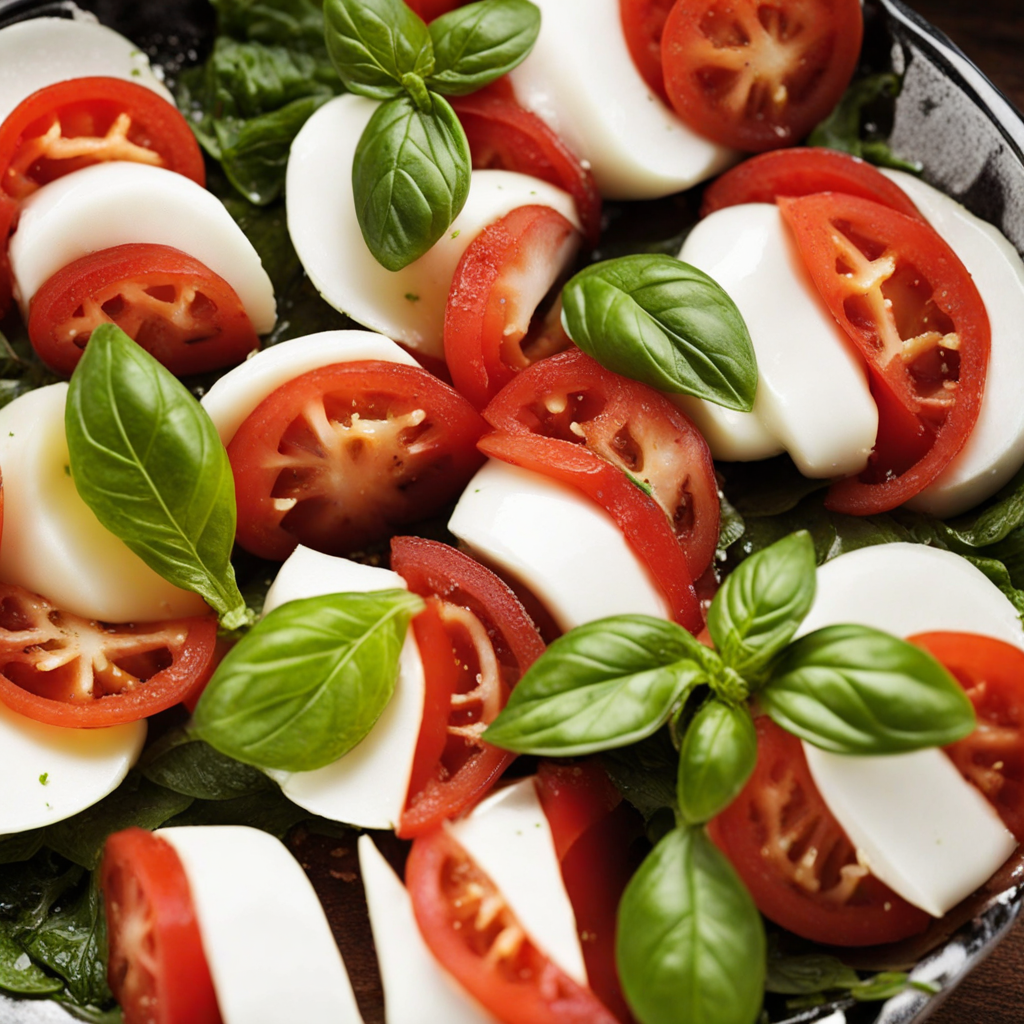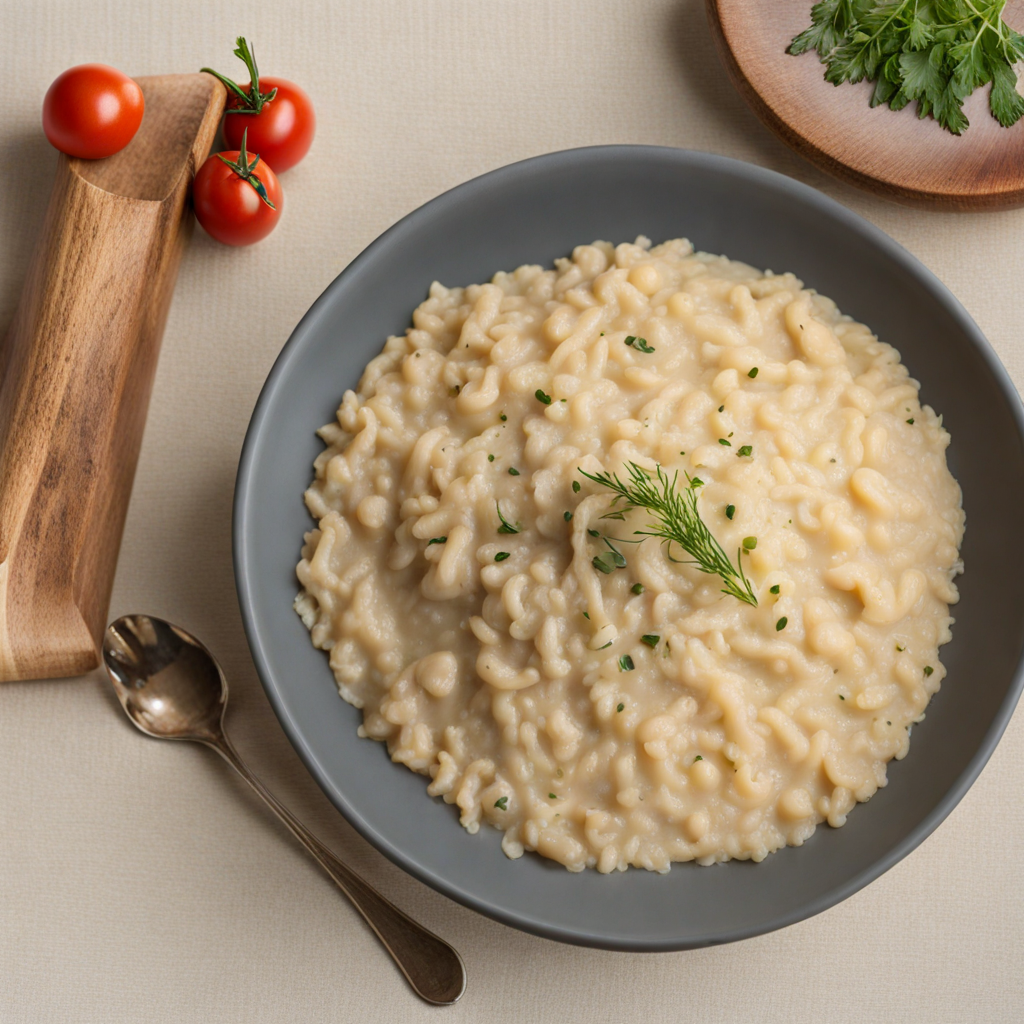Gnocchi
Gnocchi are delightful Italian dumplings that have captured the hearts and palates of food lovers around the world. Traditionally made from potatoes, flour, and eggs, these soft morsels boast a tender yet slightly chewy texture that melts in your mouth. The dough is carefully crafted, rolled into long ropes, and cut into bite-sized pieces, often featuring the signature ridges that help to hold sauces beautifully. While potato gnocchi are the most common, variations exist that incorporate ingredients such as ricotta cheese, spinach, or even pumpkin, each adding a unique flavor profile to this beloved dish. When it comes to cooking gnocchi, simplicity is key. They can be boiled until they float to the surface, signaling that they are ready to be tossed with a variety of sauces, from rich and creamy Alfredo to vibrant pesto or a classic marinara. The beauty of gnocchi lies in their versatility; they can be dressed up with sautéed vegetables, sprinkled with fresh herbs, or even baked into a comforting casserole. Each bite is a celebration of Italian culinary tradition, with the ability to transport you to the sun-kissed streets of Italy. Beyond their delicious taste and comforting texture, gnocchi also embody the spirit of Italian cooking—simple, fresh ingredients that come together to create something extraordinary. Enjoying gnocchi is not just a meal; it’s an experience that encourages sharing and savoring the moment with friends and family. Whether you are dining at a rustic trattoria in Italy or making them from scratch in your own kitchen, gnocchi promise to be a delightful addition to your culinary adventures.
How It Became This Dish
Origins of Gnocchi Gnocchi, a beloved staple of Italian cuisine, traces its roots back to ancient times. The word "gnocchi" is derived from the Italian word "nocca," meaning "knuckle," which reflects the dumpling's distinctive shape. The earliest forms of gnocchi can be traced to the Roman Empire, where they were made from simple ingredients such as flour and water, often mixed with various grains. Ancient Romans enjoyed a dish known as "lagana," which consisted of sheets of dough cut into strips, and it is believed that this served as a precursor to modern gnocchi. As the centuries progressed, the recipe for gnocchi began to evolve, largely influenced by regional ingredients and culinary practices. By the Middle Ages, the introduction of the potato to Europe from the Americas in the late 16th century revolutionized gnocchi-making. The first potato-based gnocchi appeared in the 19th century in Northern Italy, where the starchy tuber complemented the traditional flour-based dumplings, creating a richer texture and flavor profile. \n\n Regional Variations Italian cuisine is characterized by its regional diversity, and gnocchi is no exception. Each region of Italy has its own interpretation of this dish, reflecting local ingredients and culinary traditions. In Northern Italy, especially in regions like Trentino-Alto Adige and Lombardy, gnocchi are often made with potatoes, flour, and eggs, yielding a soft and pillowy texture. The most famous variant from this region is “gnocchi di patate,” which are typically served with rich sauces, such as sage butter or hearty meat ragù. In contrast, Southern Italy embraces a different approach. In regions like Campania and Sicily, gnocchi are frequently made from semolina flour, yielding a denser and firmer texture. The “gnocchi alla sorrentina” from Sorrento is a popular dish that features gnocchi baked in tomato sauce and topped with mozzarella cheese, embodying the vibrant flavors of the Mediterranean. Moreover, gnocchi is not limited to potato or semolina variations. In various parts of Italy, ingredients such as ricotta cheese, spinach, or even pumpkin are used to create unique adaptations. These regional variations highlight the versatility of gnocchi and its ability to adapt to local tastes and available ingredients. \n\n Cultural Significance Gnocchi holds a significant place in Italian culture, often associated with family gatherings and festive occasions. In many Italian households, making gnocchi is a cherished tradition passed down through generations. Families often gather to prepare the dough, with each member contributing to the process, from kneading to shaping the dumplings. This communal activity fosters a sense of belonging and connection, as families share stories and laughter while preparing their meal. Traditionally, gnocchi is served on special occasions, particularly during holidays such as Christmas and New Year’s Day. In some regions, it is customary to eat gnocchi on the last Sunday of the month, known as "Domenica dei Gnocchi," a tradition that dates back to the 19th century. This practice symbolizes the abundance of food and the importance of sharing meals with loved ones. Additionally, gnocchi's presence in Italian festivals and celebrations reinforces its cultural significance. For instance, the annual "Festa del Gnocchi" in various towns showcases local variations, cooking contests, and communal feasting, bringing together communities to celebrate their culinary heritage. \n\n Modern Development In the contemporary culinary landscape, gnocchi has transcended its humble origins to become a globally cherished dish. Italian restaurants around the world feature gnocchi on their menus, often paired with innovative sauces and ingredients that reflect a fusion of culinary traditions. Chefs experiment with flavors and textures, creating unique interpretations that cater to diverse palates. The rise of food culture and the popularity of Italian cuisine have also led to the emergence of artisanal gnocchi producers, who emphasize quality ingredients and traditional techniques. These small businesses often focus on handmade, fresh gnocchi, providing a taste of authenticity that appeals to food enthusiasts seeking genuine Italian experiences. Moreover, gnocchi has found its way into the realm of health-conscious eating. With the increasing popularity of gluten-free diets, alternative versions of gnocchi made from ingredients such as cauliflower, quinoa, or chickpea flour have emerged. These adaptations maintain the essence of gnocchi while offering nutritious alternatives for those with dietary restrictions. \n\n Gnocchi in Popular Culture The cultural impact of gnocchi extends beyond the kitchen, making its way into popular culture and media. Italian cinema, literature, and television often showcase gnocchi as a symbol of home-cooked meals and familial love. Scenes depicting families gathered around the table enjoying gnocchi highlight the dish's role in fostering togetherness and celebrating heritage. Social media platforms have further amplified the visibility of gnocchi, with food bloggers and influencers sharing their own interpretations and recipes, sparking interest and experimentation among home cooks. The hashtag #gnocchi has become a source of inspiration, with countless photos of beautifully plated dishes flooding feeds, showcasing the dish's artistic potential and inviting culinary creativity. Finally, gnocchi's presence in international competitions and food festivals has cemented its status as a culinary icon. Events such as the “World Pasta Championship” include gnocchi in their categories, celebrating the dish's global appeal and inspiring chefs to elevate traditional recipes to new heights. \n\n Conclusion The journey of gnocchi from ancient Rome to modern culinary innovation is a testament to its enduring appeal and cultural significance. Whether enjoyed in a traditional family setting or reimagined in a contemporary restaurant, gnocchi continues to bring people together, representing the heart of Italian cuisine. Its ability to adapt and evolve while retaining a connection to its roots showcases the dynamic nature of food as a cultural artifact, reminding us of the importance of tradition, family, and community in our dining experiences.
You may like
Discover local flavors from Italy


